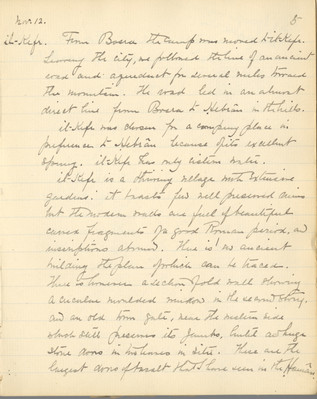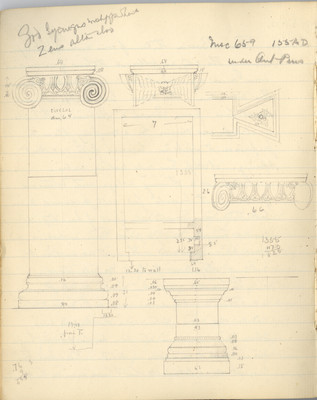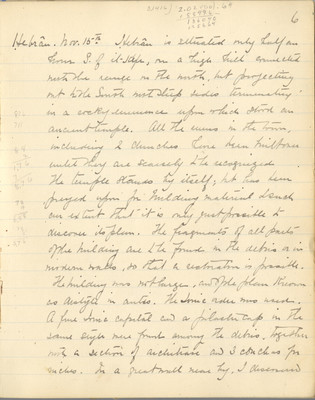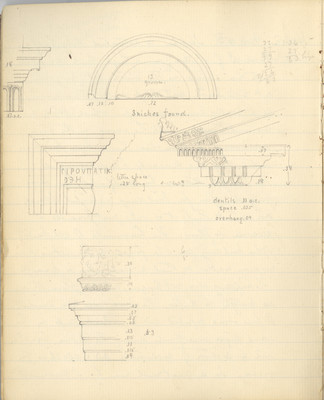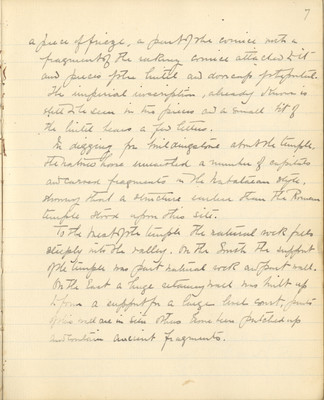Pages
BSY_FB_29-05-b
5
il-Kefr. From Bosra the camp was moved to il-Kefr. Leaving the city, we followed the line of an ancient road and aquaduct for several miles toward the mountain. The road led us in an almost direct line from Bosra to Hebrâu in the hills.
il-Kefr was chosen for a camping place in preference to Hebrâu because of its excellent spring. il-Kefr has only cistern water.
il-Kefr is a thriving village with extensive gardens. It tracts few well preserved ruins but the modern walls are full of beautiful carved fragments of a good Roman period, and inscriptions abound. There is no ancient building the plan of which can be traced.
There is however a section of old wall showing a circular moulded window in the second story, and an old town gate, near the western side which still preserves its jambs, lintel and huge stone doors in two leaves in situ. These are the largest doors of basalt that I have seen in the Haurân
BSY_FB_29-06-a
Last edit 4 months ago by Visual Resources, Department of Art and Archaeology, Princeton UniversityBSY_FB_29-06-b
6
Hebrâu Nov 15th Hebrâu is situated only half an hour S. of il-Kefr on a high hill connected with the range in the north, but projecting onto the South with steep sides terminating in a rocky eminence upon which stood an ancient temple. All the ruins in the town including 2 churches have been built over until they are scarcely to be recognized The temple stands by itself; but has been preyed upon for building material to such an extent that it is only just possible to discover its plan. The fragments of all parts of the building are to be found in the debris or in modern walls, so that a reconstruction is possible.
The building was not large, and of the plan known as distyle in antis. The Ionic order was used. A fine Ionic capital and a pilaster cap in the same style was found among the debris. Together with a section of architrave and 3 conch as in niches. In a great hall nearby, I discovered
BSY_FB_29-07-b
7
a piece of frieze, a part of the cornice with a fragment of the raking cornice attached to it and pieces of its lintel and door cap of the portal. The imperial inscription, already known is still to be seen in its pieces and a small bit of of the lintel bears a few letters.
In digging for building stone about the temple, the natives have unearthed a number of capitals and carved fragments in the Nabataean style, showing that a structure earlier than the Roman temple stood upon this site.
To the West of the temple the natural rock falls sharply into the valley. On the South the support of the temple was part natural rock and part wall.
On the East a huge retaining wall was built up to form a support for a large arch court, parts of this wall are in situ others have been patched up and contain ancient fragments.
